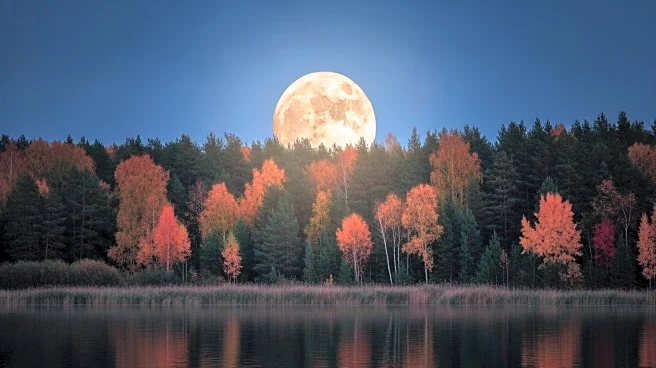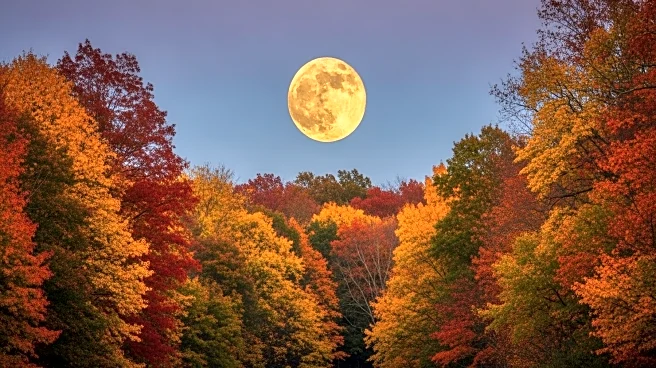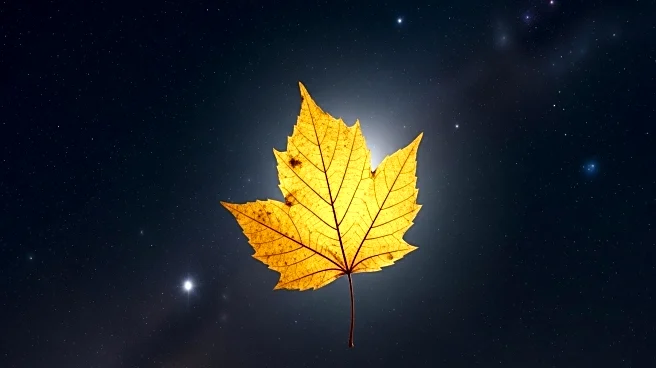What's Happening?
The autumn equinox, occurring on September 22, marks the end of summer and the beginning of longer nights in the northern hemisphere. This astronomical event signifies the point when the northern hemisphere starts to tilt away from the sun, leading to shorter days and cooler temperatures. The equinox is characterized by equal lengths of day and night, a phenomenon that happens twice a year. The date of the equinox can vary slightly each year, typically falling on September 22 or 23.
Why It's Important?
The autumn equinox is a pivotal moment in the Earth's annual cycle, influencing weather patterns and daylight hours. It marks the transition from summer to fall, affecting agricultural cycles, wildlife behavior, and human activities. Longer nights provide opportunities for stargazing and observing celestial events. The equinox is also culturally significant, celebrated in various traditions and marking the start of harvest festivals. Understanding this event helps in appreciating the Earth's tilt and orbit, which are crucial for seasonal changes.











